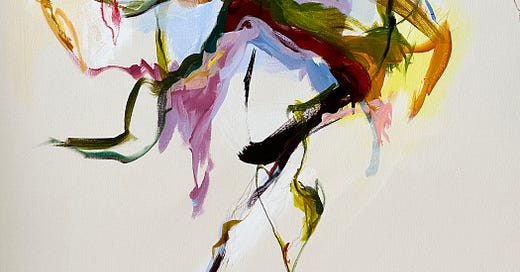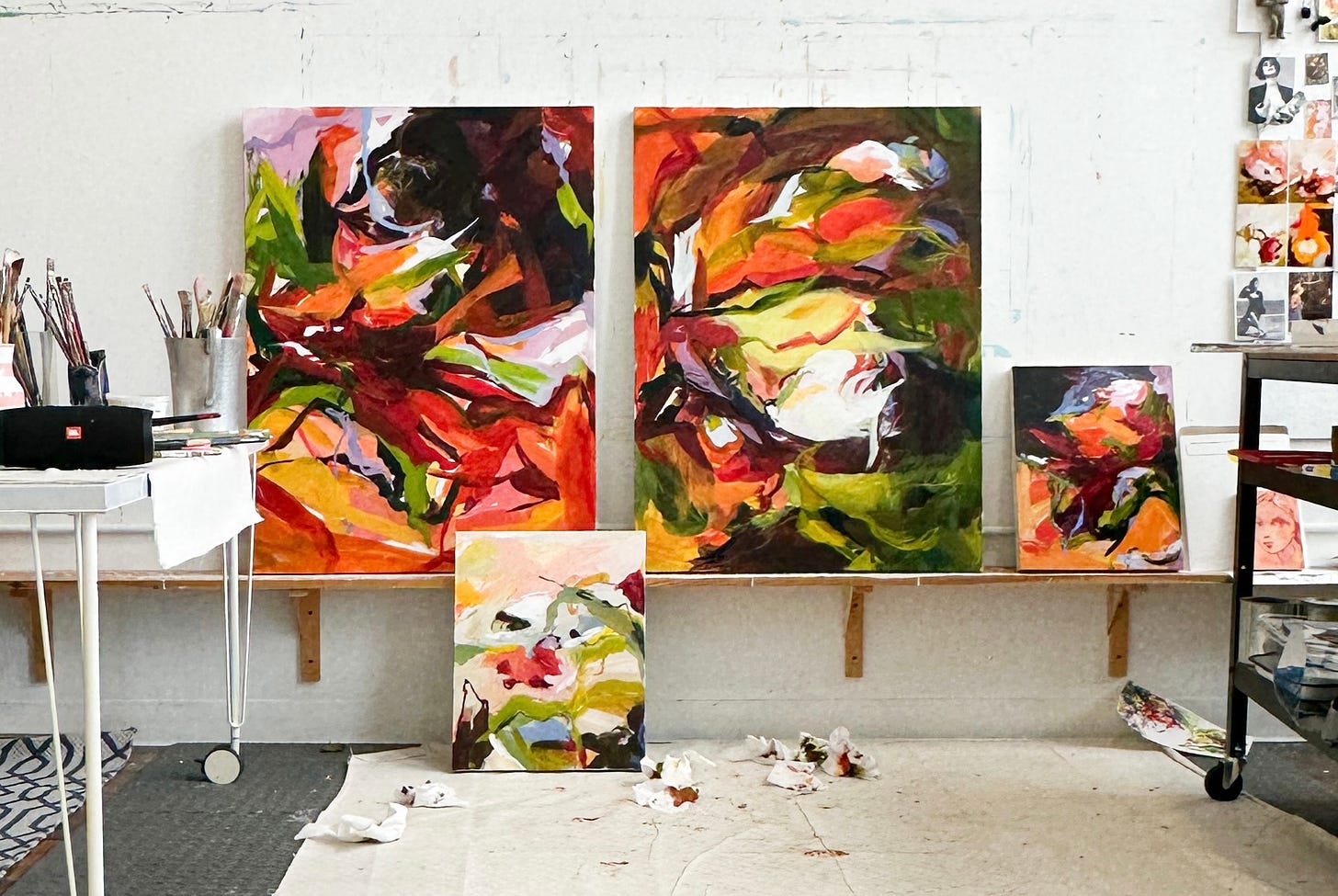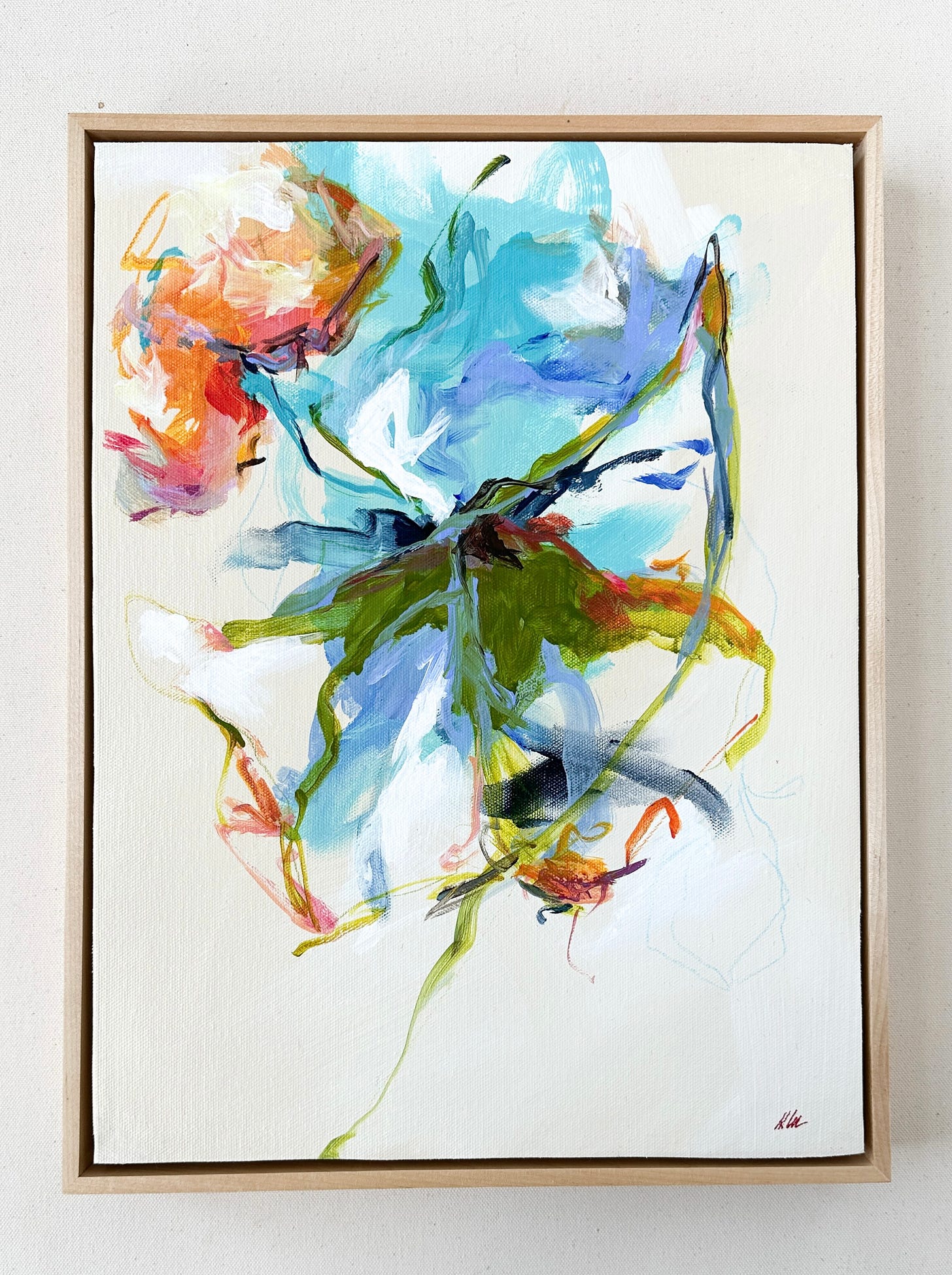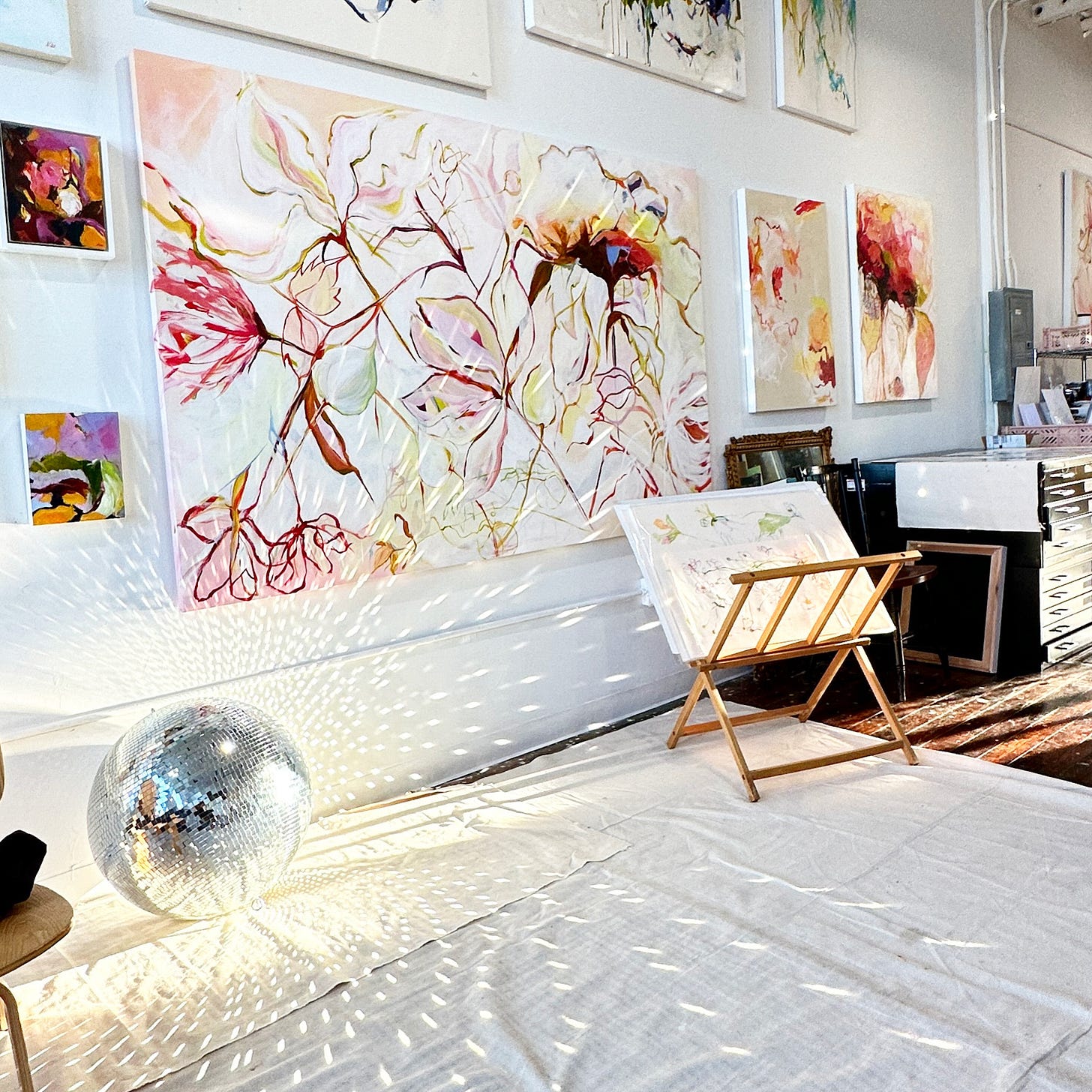As I work through creating demo videos (only a few more to go!) for the Watercolor Abstract Course, I wanted to reflect on some of the work I painted as I was putting together the show for Brooklyn.
Looking back at my work provides a powerful tool for moving forward. I feel like this particular piece, “But Then, You” is trying to communicate something to me.
I was looking for a cohesive story for my booth in Brooklyn. I have been creating visually dense paintings as of late in the studio. What I was looking for was a way to translate an impassioned conversation into a more open composition.
Now that I type it, it seems like a direct objective:
Impassioned conversation with space to hear it.
But that is only me looking back at what I was searching for.
I wanted to bring the two new pieces, L'Opera and Quivering.
And my planned 20-foot space wasn't as aligned as I wanted it to be.
I felt like I needed a piece to "cross the bridge." I didn't have months to ruminate over this; I gauged that if I didn't pull off what I needed in a week, I had to give up the attempt and move forward with the details it takes to take art onto the road for a show.
I went in thinking these things:
The two works I wanted to bring felt very earthy. The few delicate moments in these works held together the intensity of these pieces.
So I asked myself if I could flip this effectively, could intensity hold together something more delicate?
The piece would need to feel grounded, yet it required movement with an ethereal quality. I wish I could say I plan my palette. It is very instinctual. The only real thought I had color-wise was to avoid using inky blues as my contrasting elements.
Again, this is swirling in my head; I was not forming the complete sentences around it like I am now.
I was confident that I wanted to work to feel more spacious. Oddly, when I am painting a piece with open edges, it requires a fair amount of restraint from me.
My muse, above, would be a smaller work in the studio that I particularly loved. There was a lightness to it, and I wanted to borrow that quality from it. I also wanted to work within this composition.
Traditionally, placing the mass at the top of the canvas was not a go-to move, but instead of bothering me, it delighted me.
It was as if the blossom was trying to work its way off the canvas, get beyond it, resting only for a bit, long enough for me to delight in it.
I had previously thought of taking this work onto a larger canvas and fixing the composition, but I sat with it long enough to feel that the timing was right and I needed to simply expand the idea.
The hardest marks to make on a big canvas are the seemingly delicate string-like marks that dance across the space. They act as connective tissue, so all this needs to be balanced.
My work has always become a living being as I paint it. Lately, they want to grow and become something more than I can contain.
Yes, that's it. More than I can contain.
I had to (have to) stop trying to manage the outcome and control their personalities. I bring a painter's tools, lessons, and traditions, and then I really need to let them grow beyond what I know.
As I type this, I suppose that is a metaphor for life that I am currently learning.
What if we really let our children, our loved ones, and, in fact, everyone just BE? What if we allowed ourSELVES to grow off the canvas? What if I didn't need to legislate, apply rules, or manipulate? No more convincing, worrying that others might not be "getting it."
What if I freed the work and, in that, freed myself? What if I let it rest with me, dance with me as I painted it, and then let it leap beyond what I imagined?
While both “But Then, You” and “Walking Down Your Street” have sold, the 15% off Archive Sale is happening online now. You can find my link and Michael’s link below.
This sale continues until Dec. 20th.
Until next time, Monica Lee Rich









Very much enjoyed learning more about your process here.